Holi, the ‘Festival of Colours’, is said to be based on Krishna’s playful splashing of the Gopis (milkmaids) with water. Tapati showcases the festival in some states of India, exclusively for Different Truths.
It was evening when I was walking on the green carpet surrounding my home. The grass is bright with its renewed life and the trees look delicately capped with new tender leaves. The cool blitz was in a playful mood dithering the winter away but not yet ready to accept the onset of summer. The sky was the astounding revealing the startling hues of flame…. purple, red, orange and pink, a display of colours of Holi, the festival of colours. The whole atmosphere looked sinking in a fresh mood of spring and a supple touch of romance.
Yellow reflects all happiness; it is also the colour of Spring that brings optimism… Basanti is the name of Spring.
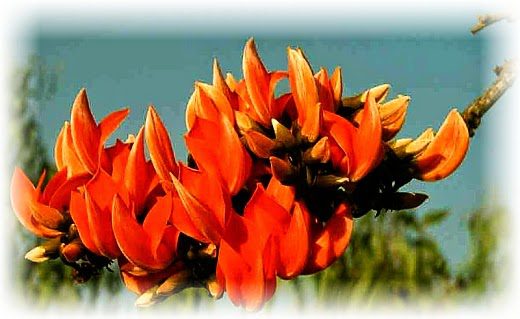 I stood amazed looking into Nature’s canvas, fancying how the seasons unveil strokes of all colours. If we imagine a colour for every season, Spring is the perfect palette of colours. Sky changes its colour too often, from morning to night with a display dramatic array of colours and moods; but there is not a shade of doubt that welcoming colour of Spring smear our mood with joy and happiness. Yellow reflects all happiness; it is also the colour of Spring that brings optimism; the colour of light puts forth newness coming out of dark when the nude dried branches get covered with soft green leaves and in no time fills the spectrum with bright hues of flowering. The yellow flowers of Palash trees or trees known as Forest Fire paint the Nature with burning bright yellow. Hence Basanti is the name of Spring.
I stood amazed looking into Nature’s canvas, fancying how the seasons unveil strokes of all colours. If we imagine a colour for every season, Spring is the perfect palette of colours. Sky changes its colour too often, from morning to night with a display dramatic array of colours and moods; but there is not a shade of doubt that welcoming colour of Spring smear our mood with joy and happiness. Yellow reflects all happiness; it is also the colour of Spring that brings optimism; the colour of light puts forth newness coming out of dark when the nude dried branches get covered with soft green leaves and in no time fills the spectrum with bright hues of flowering. The yellow flowers of Palash trees or trees known as Forest Fire paint the Nature with burning bright yellow. Hence Basanti is the name of Spring.
Holi, often referred to as the ‘Festival of Colours’, is said to be based on Krishna’s playful splashing of theGopis (milkmaids) with water, but mostly it is celebrated on the coming of spring with all its beautiful colours and vibrant life.
The festival is started on the night before with the burning and destruction of the demoness Holika. According to legends, Prahlada upset his father, Hiranyakashipu, by his continuance of the worship of Vishnu. Hiranyakashipu’s sister, Holika was given the task of placing Prahlada into a fire as punishment. Holika, who had a magical shawl that made her impervious to fire, was burnt to death but Prahlada emerged from the fire unharmed. Vishnu had demonstrated his desire to help those who worship him.
In modern days, it is celebrated as a bonfire, where people gather to release whatever no longer serves them, into the flames. There are Holi songs that are sung and the Dholak (drums) are played.
In modern days, it is celebrated as a bonfire, where people gather to release whatever no longer serves them, into the flames. There are Holi songs that are sung and the Dholak (drums) are played. However, the really fun part involves people throwing colored powder on each other and squirting each other with water guns. This is associated with Lord Krishna who liked to play pranks on the village girls by drenching them in water and colors. Bhang (a paste made from cannabis plants) is also traditionally consumed during the celebrations.
Vasant utsav or the Festival of Spring marks the onset of spring and the festival is celebrated with much fanfare in different parts. There are few places that have become iconic for the celebration of Holi or spring festival.
In Santiniketan, the festival starts of the previous day of Purnima or the full moon day of Phalgun month.
 In West Bengal it is celebrated as Dol Yatra. In Santiniketan, the festival starts of the previous day of Purnima or the full moon day of Phalgun month. It starts with Baitalik when students and staff take rounds of the campus with singing and praying Nature to usher in spring and fill the earth with blessings of new life and colours. In the next morning the festival starts with students dancing in a procession to the rendering of“Khol Dvar Khol…” (Please open your door and embrace the Spring all around…”). At the end, people play with Abir, powder of colours and enjoy the colour of festival.
In West Bengal it is celebrated as Dol Yatra. In Santiniketan, the festival starts of the previous day of Purnima or the full moon day of Phalgun month. It starts with Baitalik when students and staff take rounds of the campus with singing and praying Nature to usher in spring and fill the earth with blessings of new life and colours. In the next morning the festival starts with students dancing in a procession to the rendering of“Khol Dvar Khol…” (Please open your door and embrace the Spring all around…”). At the end, people play with Abir, powder of colours and enjoy the colour of festival.
On Dol Purnima, the ISKON community globally celebrates the birth of Gaurango Mahaprabhu with rituals of fasting and worship with devotional songs.
In Barsana and Nandgaon of Uttar Pradesh, it is celebrated as Lathmar Holi.
In Barsana and Nandgaon of Uttar Pradesh, it is celebrated as Lathmar Holi. It is an ancient ritual where women beat their husbands with sticks while they play with colours. There is a legend that Krishna went from Nandgaon to Barsana to visit Radha. There he offended her and other Gopis beat him with sticks. The practice continues even today as men from Nandgaon arrive in Barsana and get beaten with sticks, while protecting themselves with shields. The ritual was eternalised in silver screen in Hindi movie, Toilet: Ek Premkatha.
In Jaunpur, people play a wild and aggressive Holi. Besides using silver and green colours, they play with muds and then jump into the Ganges. Also, Jaunpur has a culture of throwing stones at each other.
In 2016, thousands of widows in Mathura’s 400 hundred years old Gopinath temple celebrated Holi after breaking age-old taboos.
Mathura draws large crowds every year during the festival where it is celebrated 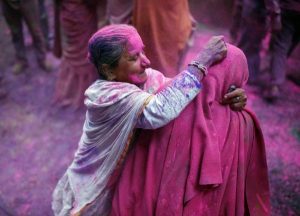 with gulal and rose petals. In 2016, thousands of widows in Mathura’s 400 hundred years old Gopinath temple celebrated Holi after breaking age-old taboos. Now widows from local ashrams, who are abandoned by their families, gather at the temple to play Holi.
with gulal and rose petals. In 2016, thousands of widows in Mathura’s 400 hundred years old Gopinath temple celebrated Holi after breaking age-old taboos. Now widows from local ashrams, who are abandoned by their families, gather at the temple to play Holi.
Holi and Dol Purnima are celebrated in Orissa for two days. On Dol Purnima, people worship their cattle after bathing them. Throughout Spring or in the month of Chaitra, people in small groups visit door to door with a palanquin carrying Lord Krishna’s idol. They visit households offer prayers and worship the god. On the morning of Dol Purnima, these palanquins from different villages converge on large ground where people play with Abir or Fagu; this is called Melana or congregation of gods.
Kerala’s Gosripuram Thiruma temple hosts a mellowed version of the festival known as Manjul Kuli.
While Holi celebration is not very common in the southern parts of India, Kerala’s Gosripuram Thirumatemple hosts a mellowed version of the festival known as Manjul Kuli. On the first day of the festival, people visit the temple and worship the god and on the second day they play with colours mixed in water.
In Manipur, the celebration continues over five days. To mark the arrival of spring, Holi is known asYaosang. A straw hut known as Yaosang Mel Thaba is burnt on the first day after sunset. After this the children visit neighbouring houses asking for donations. Young girls get on the streets and block travellers with ropes to get their share of donations called Nakatheng. This continues till the third day, after which people play with colours for two days.
In Punjab Holi is celebrated but there the Hola Mohalla is largely a celebration of bravery of its warriors.
In Punjab Holi is celebrated but there the Hola Mohalla is largely a celebration of bravery of its warriors. The festival is celebrated a day before Holi but with a goal of flexing their physical and fighting power in front of the community. Men get out in a procession wearing colourful attires and exhibit their martial skills. It is a spectacular even which is both colourful and vibrant.
Though in different parts of India, the festival is celebrated with their regional hue, Holi is a free-for-all carnival of colors where participants chase and color each other. Anyone and everyone are fair game — friend or stranger, rich or poor, man or woman, children or elders. Holi signifies the arrival of Spring, the end of winter, and is a very carefree festival that’s great fun to participate to wash of the past and drench in fresh colours of rejuvenation.
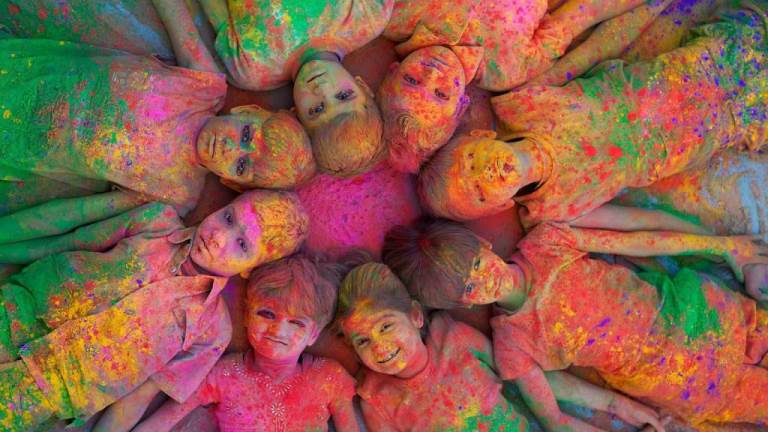
©Tapati Sinha
Photos from the Internet

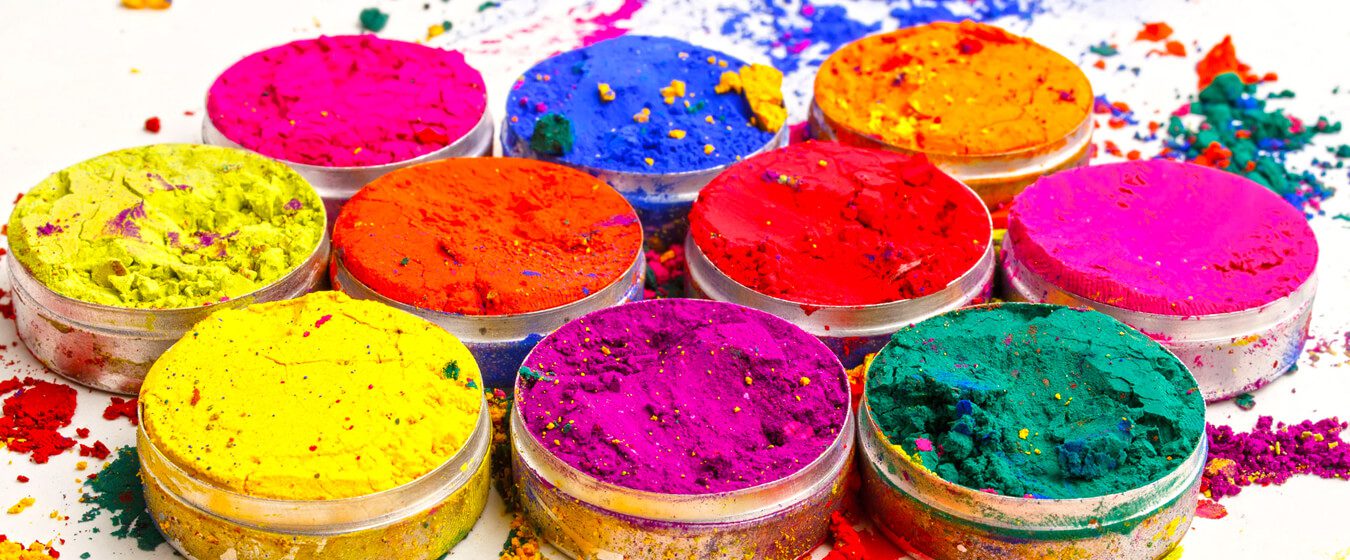


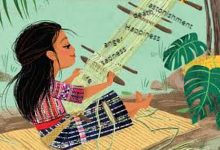

 By
By


 By
By